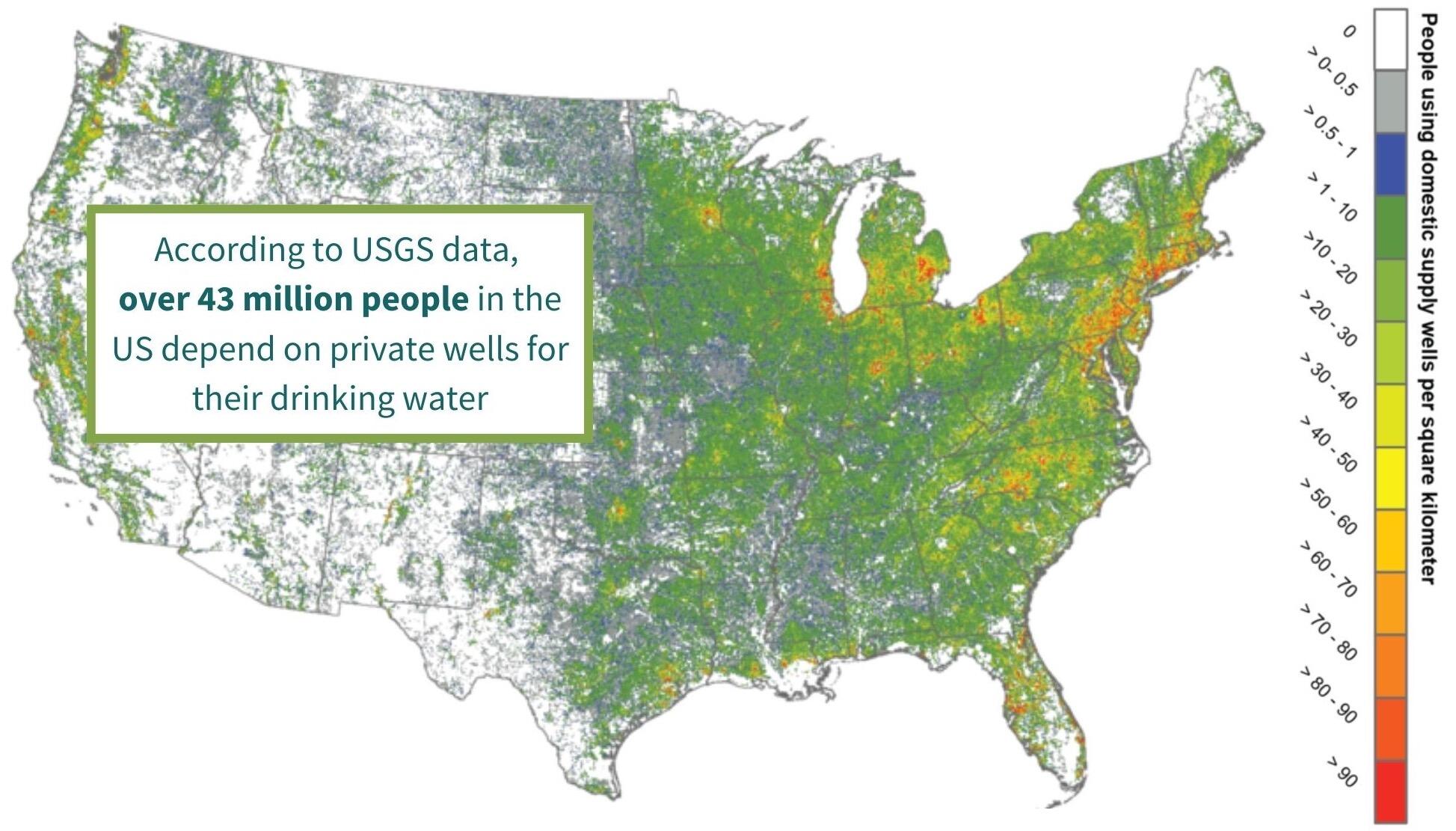![]() Across the US, tens of millions of individuals unknowingly consume drinking water with concentrations of metals that exceed regulatory guidelines. The problem is more prominent in untreated water from private wells than in municipal drinking water supplies that undergo water treatment. Although private wells supply drinking water for more than 15% of the population, elevated concentrations of metals in these wells may go undetected and unremediated due to sporadic and incomplete monitoring data.
Across the US, tens of millions of individuals unknowingly consume drinking water with concentrations of metals that exceed regulatory guidelines. The problem is more prominent in untreated water from private wells than in municipal drinking water supplies that undergo water treatment. Although private wells supply drinking water for more than 15% of the population, elevated concentrations of metals in these wells may go undetected and unremediated due to sporadic and incomplete monitoring data.
Our Goals
- Develop a novel statistical method to identify populations potentially at risk for elevated exposures to metals through contaminated drinking water
- Develop a map of metal mixtures characteristic of drinking water exposures in different regions
- Investigate whether there are socioeconomic differences or disparities based on metal concentrations in drinking water
Our Approach
Project 3 is developing statistical models (based on logistic regression and random forest methods) to predict concentrations of metals and metal mixtures (arsenic, cadmium, and lead) in private wells based on 50 years of aggregated well data from the National Water Quality Monitoring Council, in addition to information about hydrological and geological features associated with metal occurrence.
In addition, together with the Environmental Working Group, we are examining decades of public water supply records in combination with information on point sources and indicators of socioeconomic disparities to determine whether elevated concentrations of metals in public drinking water supplies are associated with indicators of environmental justice.






